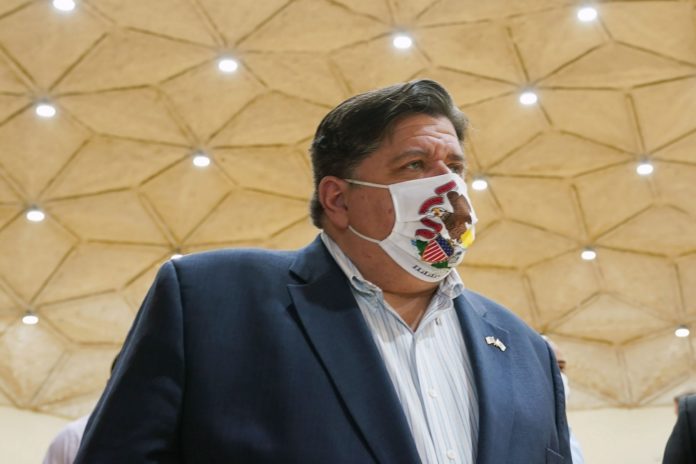
Oct. 20 (UPI) — Illinois Gov. J.B. Pritzker on Monday introduced enhanced restrictions in the southeastern part of the state, after a weekend that saw the highest one-day spike in national COVID-19 cases since July.
Pritzker announced that the state will implement new mitigation standards in Region 5 on Thursday including prohibiting indoor dining and bar service, cutting off outdoor seating after 11 p.m., banning party buses and restricting gatherings of more than 25 people after the area exceeded the 8% threshold for its seven-day positivity rate for three consecutive days.
Region 7 and Region 8, consisting of Will, Kankakee, Kane and DuPage counties, and Region 1 in northwestern Illinois are also at risk of facing increased restrictions with positivity rate thresholds above 8%.
Illinois reported 3,113 new COVID-19 cases and 22 new deaths on Monday and has reported 25,269 new cases over the last seven days, a record in the state for a seven-day period. Since the beginning of the pandemic, the state has reported a total of 347,161 cases and a death toll of 9,236.
Nearly 70,000 new cases were added nationally on Friday, according to data from Johns Hopkins University — the greatest single-day increase since late July at the peak of the pandemic.
The United States has averaged about 55,000 cases per day so far in October, way above September’s average. Research at Johns Hopkins on Monday showed an addition of 48,200 cases and almost 400 deaths on Sunday.
Dr. Anthony Fauci, who has frequently been at odds with the Trump administration about the federal response to the pandemic, said in an interview Sunday night that the toughest days of the pandemic lay ahead.
“When you have a million deaths and over [40] million infections globally, you cannot say that we’re on the road to essentially getting out of this,” he told CBS’ 60 Minutes. “So quite frankly, I don’t know where we are. It’s impossible to say.”
Fauci also said he wasn’t surprised that President Donald Trump tested positive for COVID-19 earlier this month after weeks of gathering in large groups of people and flouting health recommendations, such as face masks.
“Absolutely not,” he said. “I was worried that he was going to get sick when I saw him in a completely precarious situation of crowded, no separation between people, and almost nobody wearing a mask.
“When I saw that on TV, I said, ‘Oh my goodness. Nothing good can come outta that, that’s gotta be a problem.’ And then sure enough, it turned out to be a super-spreader event.”
Michael Osterholm, director of the Center for Infectious Disease Research and Policy at the University of Minnesota, told NBC’s Meet the Press on Sunday that a lack of consistent messaging from the federal government and seasonal patterns will make for much larger levels of new cases.
“The next six to 12 weeks are going to be the darkest of the entire pandemic,” he said. “People don’t know what to believe, and that’s one of our huge challenges going forward, is we’ve got to get the message to the public that reflects the science and reflects reality.”
“We’re probably in the 7th inning of the acute phase of this pandemic right now, but the hardest part is probably ahead,” Dr. Scott Gotlieb, former head of the Food and Drug Administration, told CNBC Monday.
“It looks like we’re entering a pretty difficult period right now.”
Cases in the United States have been on a clear and steady incline since the initial peak in July declined to about 24,000 cases in early September.
Since the start of the pandemic, there have been 8.16 million cases and 219,700 deaths nationally, according to Johns Hopkins.
In Minnesota, new cases increased by more than 5,700 over the weekend, during which the state saw the three largest days of growth to date.
There were 17 deaths Sunday, the fourth time in five days the toll has been in double digits.





